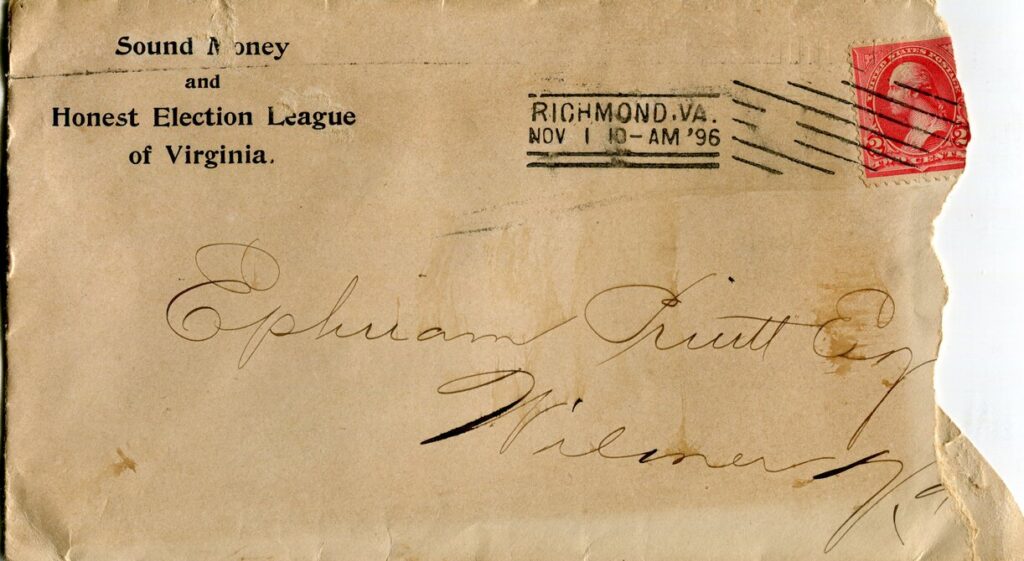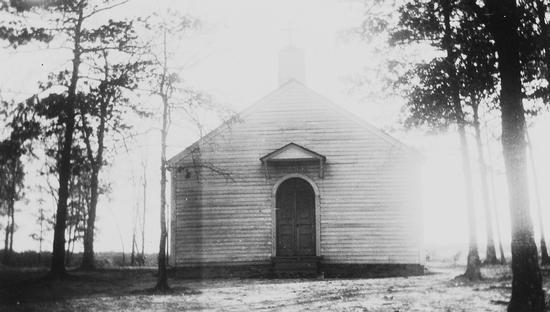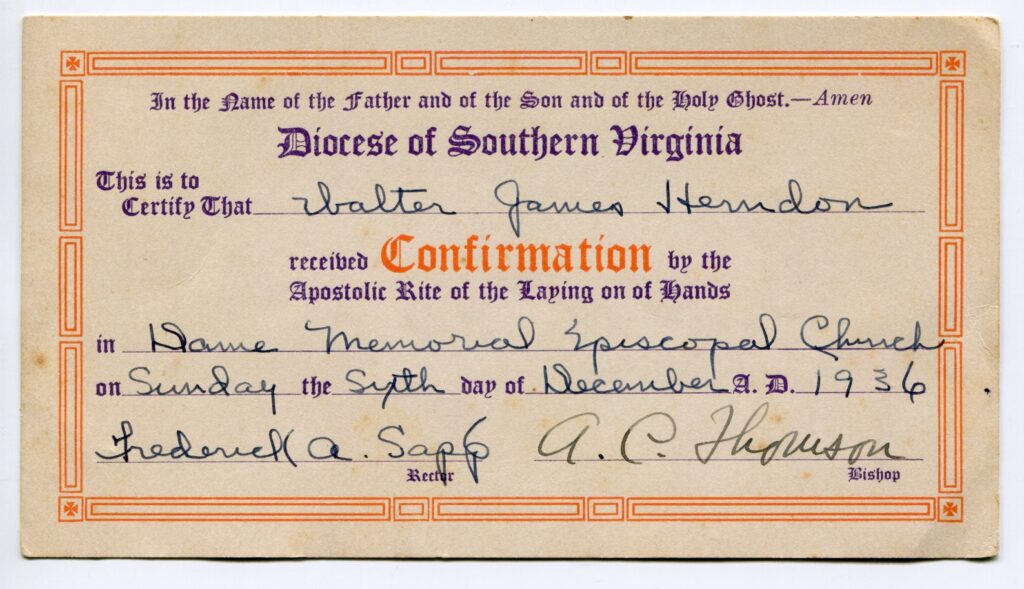
**This research was first published in the June 6, 2024 edition of the Chatham Star-Tribune newspaper as part of Kyle Griffith’s weekly segment entitled “Heritage Highlights.”

Dame Memorial Episcopal Church as it looked soon before demolition in the 1980s
The Irish Road between Chatham and Whitmell remains one of the oldest routes through Pittsylvania County made by early European settlers. In 1844, the construction of Christ’s Episcopal Church developed a social center for the area that became Wilmer. A small community formed around the church over the following four decades. Members eventually decided to deconstruct the church timber by timber and relocate it to nearby Pigg’s Mill. The house of worship was reconstructed at an enlarged size at its new site in view of Pudding Creek and the operations of Hezekiah Ford Pigg.

In 1888, the same year that the church was relocated, store owner Lewis Cassada Giles (1853-1932) signed a form to establish the Wilmer Post Office within Giles Store. At that time, mail was carried twice per week. The name was chosen in honor of Rev. George T. Wilmer (1819-1898), an Episcopal clergyman in Chatham. The form detailed that the prominent waterways included Banister River, one mile to the north, and Pudding Creek, one-fourth of a mile to the south.


The nearest post offices were at Piggs, three miles to the southeast, Whitmell five miles to the west, and Caddo four miles to the south. The nearest railroad was the Virginia Midland Railroad, six miles to the east at Dry Fork Depot. In the book “Yes, There is a Dry Fork, Virginia,” author Charles B. Motley mentioned a mailman named Winstead who delivered mail between the post offices at Dry Fork, Wilmer, and Swansonville. Winstead walked the distance of about ten miles “as the crow flies – across fields, streams, farms, and through the woods” to deliver mail.

The Wilmer Post Office operated for a total of thirteen years. It was discontinued on 24 October 1901 along with a handful of others within the county. The widespread closure was primarily driven by the implementation of Rural Free Delivery (RFD). This service, which started as an experimental program in 1896, aimed to deliver mail directly to rural residents’ homes, rather than requiring them to travel to distant post offices. By 1902, RFD had become a permanent and rapidly expanding fixture across rural America. The Post Office Department consolidated numerous small post offices, centralizing operations to offices strategically located along rural delivery routes. From a peak of nearly 77,000 post offices within the United States in 1901, the number dropped to about 59,000 by 1911, reflecting the closure of over 17,000 post offices in just a decade (USPS statistics).
The 1900 census reveals that brothers L. C. and Columbus Giles owned adjacent properties with their families. Other neighbors included Scott Watson, Robert & Rebecca Meadows, Charlie Boswell, Elliott Herndon, Charles Mills, Lawson Emerson, Ephraim & Delaware Pruett, Ellis H. Jones, Elisha W. & Pattie Powell, as well as a handful of other notable residents who mostly all worked in tobacco.
The Episcopal church functioned for twenty-three years at its second location near Pudding Creek before Rev. George W. Dame suggested the church be returned to its original site. In 1911, the church was reassembled near Giles Store on Irish Road and was renamed “Dame Memorial Church.” It continued to serve the community, and the graveyard became the final resting place of several individuals throughout the following fifty years. The gravestone of L. C. Giles is engraved “Louis Cass Giles” with the epitaph “Death is another life.”


Dame Memorial Church was unfortunately demolished sometime in the 1980s, but the graveyard has had new additions as recently as 2003 and is well-maintained. The name of “Wilmer” has long ceased to exist, but one can still imagine the wagons loaded up with wheat, following the dirt roads dotted with old log homes and tobacco barns, down to the creek at Pigg’s Mill to make flour. Wilmer serves as a great example of a typical backroad community that existed throughout the Virginia Southside and the Old Belt of tobacco farming.

Hazel May Grant Morris